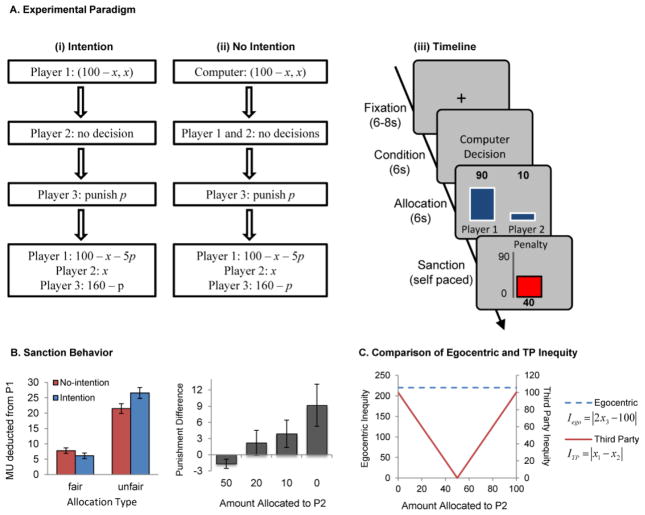Fig. 1.
(A) In the Intention condition, a dictator (P1) is given an endowment of 100 monetary units (MU), and can distribute any proportion of this endowment between P1 and a recipient (P2). The dictator’s decision is then revealed to the third-party (P3), who decides whether to sanction the behavior of the dictator at a ratio of 1:5. That is, for every MU spent by the third-party, the dictator’s earning is reduced by five MUs. The No-Intention condition is identical except the distribution between the dictator and the recipient is decided by a randomization device. The distributions of P1 and P2 are matched between two conditions (B) Third-party sanction decisions are modulated by both distribution inequity as well as intentionality. Left panel shows sanction varying between distributional inequity and intentionality. Fair trials are classified as 50:50 allocations, and unfair trials as trials where P1 receives 80 MUs or greater. Right panel shows paired differences between sanction in Intention and No-Intention conditions under different levels of distributional inequity. (C) Under egocentric models of inequity, the third party experiences the same level of inequity (blue dashed line) in the current game regardless of the amount that was allocated to P2 (x-axis). In contrast, under impartial, third party models of inequity, the third party experiences high levels of inequity (solid red line) when P2’s allocation significantly departs from a 50–50 split of the initial endowment.

